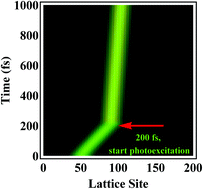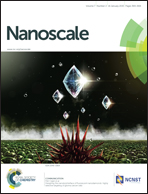Deep localized distortion of alternating bonds and reduced transport of charged carriers in conjugated polymers under photoexcitation
Abstract
In a real bulk heterojunction polymer solar cell, after exciton separation in the heterojunction, the resulting negatively-charged carrier, a polaron, moves along the polymer chain of the acceptor, which is believed to be of significance for the charged carrier transport properties in a polymer solar cell. During the negative polaron transport, due to the external light field, the polaron, which is re-excited and induces deep localization, also forms a new local distortion of the alternating bonds. It is revealed that the excited polaron moves more slowly than the ground-state polaron. Furthermore, the velocity of the polaron moving along the polymer chain is crucially dependent on the photoexcitation. With an increase in the intensity of the optical field, the localization of the excited polaron will be deepened, with a decrease of the polaron's velocity. It is discovered that, for a charged carrier, photoexcitation is a significant factor in reducing the efficiency during the charged carrier transport in polymer solar cells. Mostly, the deep trapping effect of charged carrier in composite conjugated polymer solar cell presents an opportunity for the future application in nanoscale memory and imaging devices.


 Please wait while we load your content...
Please wait while we load your content...